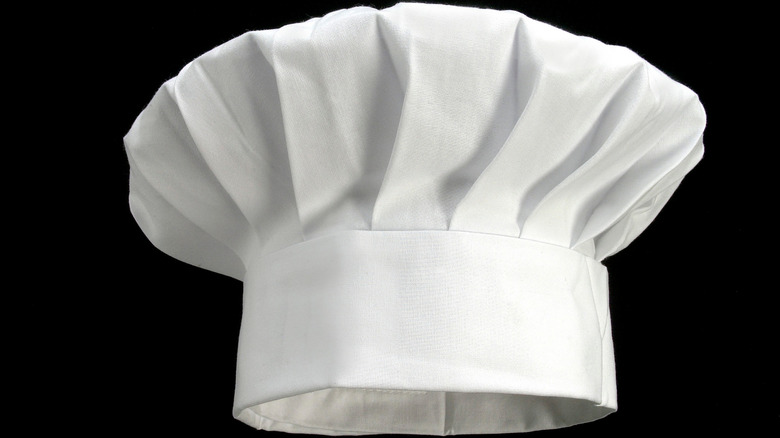The Mysterious Connection Between A Chef's Hat And Eggs
Head chefs carry respect and command presence in busy kitchens, while the height of a chef's hat indicates rank and training among restaurant staff, explains Chef World. Known as a toque, chef hats were traditionally worn in kitchens to maintain cleanliness and keep hair out of dishes (per Escoffier). Nowadays, the uniform's association with fine dining can be traced back to Marie-Antoine Carême, who Eater describes as the first celebrity chef.
According to contemporary history lecturer Jérémie Brucker, Carême began wearing a tall, white hat while working for the British government in 1821; Carême was so impressed by the military uniforms he saw that he was inspired to come up with a culinary uniform. Carême wanted an outfit that might represent the best, most prestigious cuisines found throughout Europe, notes Alimentarium. In time, however, the hat became assigned other symbols, with both its size and the number of folds indicating the abilities of the chef.
A hat with hidden meanings
According to Bon Appétit, a chef's toque has 100 folds, and each fold represents a different way in which an egg might be prepared. Wearing a hat with many pleats was evidence that a chef was experienced, and, according to Mental Floss, the uniform communicated devotion to the culinary arts. The more folds in the hat, the more recipes a chef was able to make (per Chef World).
The Daily Meal further reports that Carême wore an 18-inch hat that had to be kept in place by long cardboard pieces to demonstrate his culinary prowess. In modern-day kitchens, however, most chef hats range from 9 to 12 inches tall and contain a fixed number of creased folds, notes Aussie Chef. White toques can still be found on the heads of experienced chefs to reassure guests of the professionalism and seriousness of the team working to prepare dishes in the kitchen.

